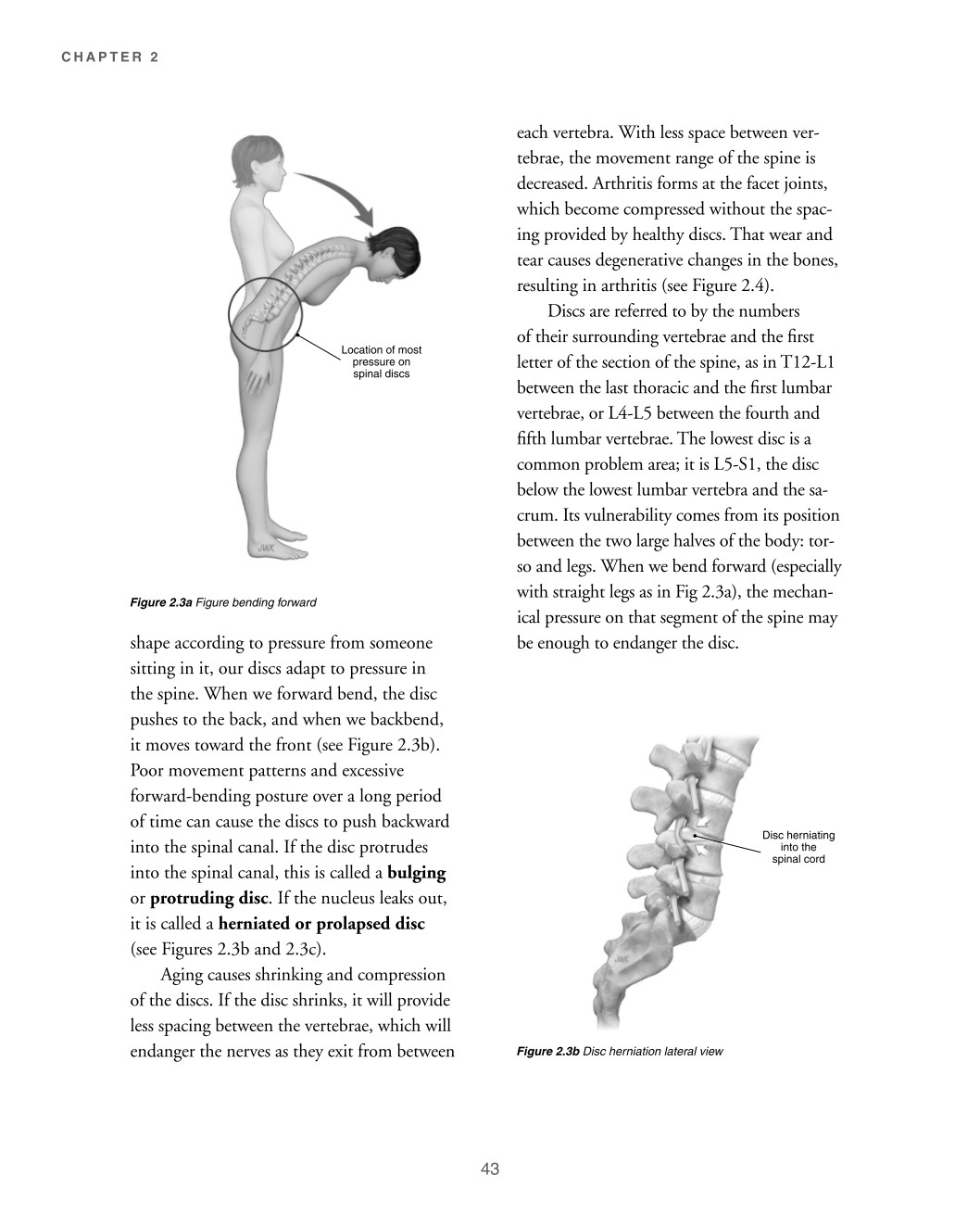

CHAPTER 2
each vertebra. With less space between ver- tebrae, the movement range of the spine is decreased. Arthritis forms at the facet joints, which become compressed without the spac- ing provided by healthy discs. That wear and tear causes degenerative changes in the bones, resulting in arthritis (see Figure 2.4). Discs are referred to by the numbers Location of most pressure on spinal discs Figure 2.3a Figure bending forward shape according to pressure from someone sitting in it, our discs adapt to pressure in the spine. When we forward bend, the disc pushes to the back, and when we backbend, it moves toward the front (see Figure 2.3b). Poor movement patterns and excessive forward-bending posture over a long period of time can cause the discs to push backward into the spinal canal. If the disc protrudes into the spinal canal, this is called a bulging or protruding disc. If the nucleus leaks out, it is called a herniated or prolapsed disc (see Figures 2.3b and 2.3c). Aging causes shrinking and compression of the discs. If the disc shrinks, it will provide less spacing between the vertebrae, which will endanger the nerves as they exit from between Figure 2.3b Disc herniation lateral view of their surrounding vertebrae and the first letter of the section of the spine, as in T12-L1 between the last thoracic and the first lumbar vertebrae, or L4-L5 between the fourth and fifth lumbar vertebrae. The lowest disc is a common problem area; it is L5-S1, the disc below the lowest lumbar vertebra and the sa- crum. Its vulnerability comes from its position between the two large halves of the body: tor- so and legs. When we bend forward (especially with straight legs as in Fig 2.3a), the mechan- ical pressure on that segment of the spine may be enough to endanger the disc.
Disc herniating into the spinal cord
43